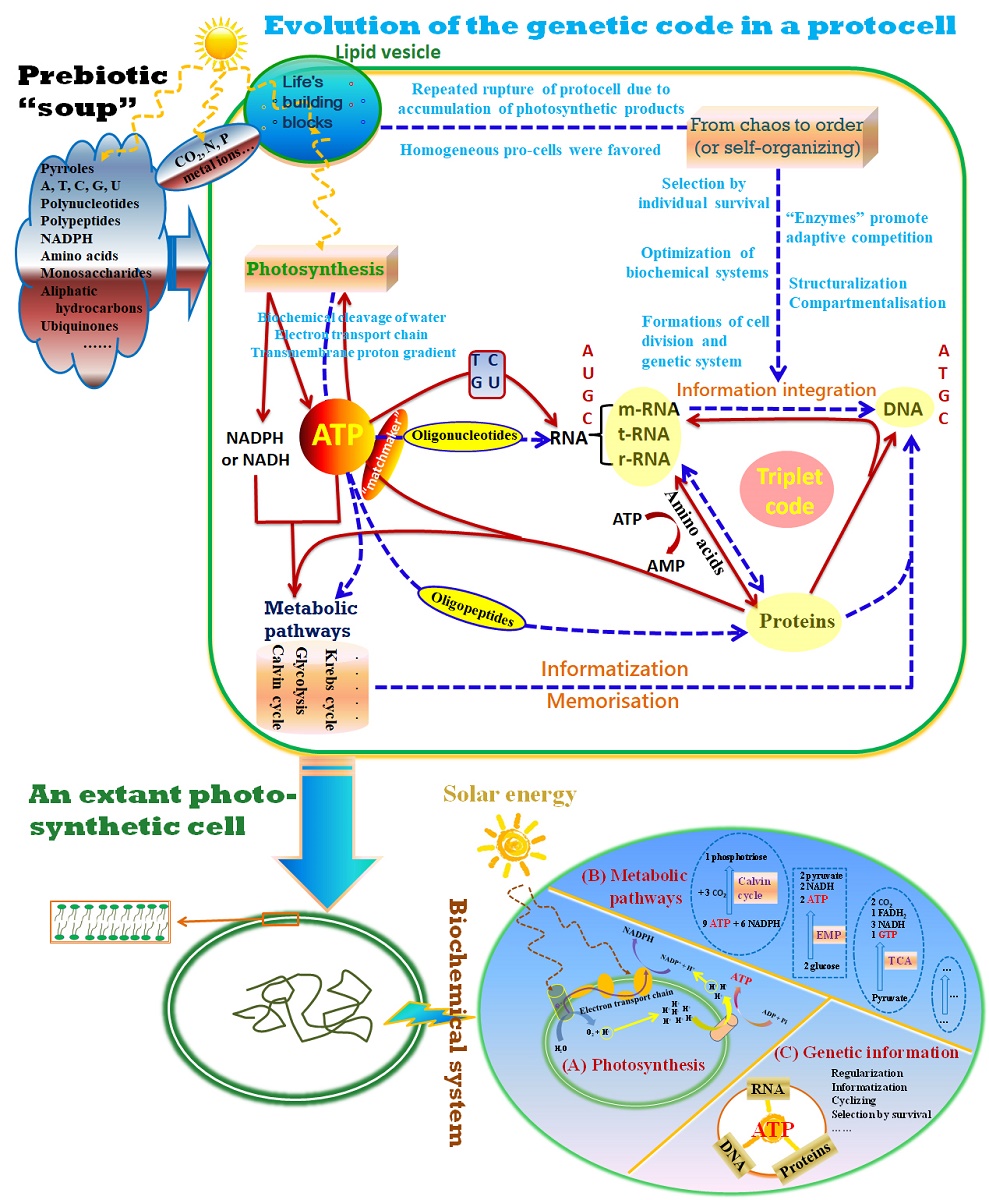A plenty of theories on the origin of genetic codes have been proposed so far, yet all ignored the energetic driving force, its relation to the biochemical system, and most importantly, the missing “matchmaker” between proteins and nucleic acids. Here, a new hypothesis is proposed, according to which ATP is at the origin of the primordial genetic code by driving the coevolution of the genetic code with the pristine biochemical system. This hypothesis aims to show how the genetic code was produced by photochemical reactions in a protocell that derived from a lipid vesicle enclosing various life’s building blocks (e.g. nucleotides and peptides). At extant cell, ATP is the only energetic product of photosynthesis, and is at the energetic heart of the biochemical systems. ATP could energetically form and elongate chains of both polynucleotides and polypeptides, thus acting a “matchmaker” between these two bio-polymers and eventually mediating precellular biochemical innovation from energy transformation to informatization. ATP was not the only one that could drive the formation of polynucleotides and polypeptides, but favored by precellular selection. The protocell innovated a photosynthesis system to produce ATP efficiently and regularly with the aids of proteins and RNA/DNA. The completion of permanently recording the genetic information by DNA marked the dawn of cellular life operated by Darwinian evolution. The ATP hypothesis supports the photochemical origin of life, shedding light on the origins of both photosynthetic and biochemical systems, which remains largely unknown thus far.

